- Home
- Deborah Harkness
The World of All Souls Page 15
The World of All Souls Read online
Page 15
Date of birth: Unknown
Family and romantic relationships: Married to Robert Hawley, with whom she had several children
Personal history: Margaret Hawley was Robert’s gimlet-eyed wife, who kept close watch over their children as well as over Robert’s unmarried male apprentices and his many customers. As an Elizabethan housewife, Margaret would have been expected to cook and sew for her household, manage the domestic economy, govern their servants and apprentices, plus be her husband’s partner in his shoemaking business. Sixteenth-century housewives kept a sharp eye on the goings-on in the households of their neighbors, too, and expected that their neighbors would do the same. This dragnet of feminine domestic surveillance was why it was almost impossible for Diana—or indeed for any man, woman, or child—to enjoy a shred of privacy in sixteenth-century London.
ROBERT HAWLEY
Date of birth: Unknown
Family and romantic relationships: Married to Margaret Hawley, with whom he had several children
Personal history: Robert Hawley was a shoemaker who lived with his wife and children at the Hart and Crown, a half-timbered, two-story building on London’s Water Lane. The building possessed the unusual luxury of an interior courtyard, and Matthew Roydon; his wife, Diana; and their servants and family had rooms on the first floor there.
In a world where most people made their living on their feet, shoemaking was a useful and common trade, and the sheer bulk of his account book suggests that Robert was an ambitious and productive craftsman. He seems to have married a woman who was every bit his equal in ambition and productivity.
HECTOR AND FALLON
Matthew’s devoted dogs at present-day Sept-Tours.
JOHN HESTER
Origin of name: Hester has old Germanic origins, connected to the name Heister, and speculated to be an occupational name for a town crier (a civic official who made announcements).
Date of birth: Unknown
Personal history: John Hester was a well-known and respected apothecary and alchemist, with a shop on St. Paul’s Wharf by the Thames in sixteenth-century London. He was known for his sealing wax and his excellent ink made from iris flowers, as well as his books of medical cures and a rather higher class of customers. Mary Sidney, Countess of Pembroke, for instance, used his migraine remedy for her son’s headaches. Historians know John Hester for his English translations of foreign medical treatises, which he contended would provide practical remedies for ordinary citizens (if they managed to survive the often toxic cures or addictive opiates he advised and dispensed). As a supporter of the physician Paracelsus’s medical ideas, Hester was a manufacturer of chemical medicines.
When Diana time-traveled to London in 1590, she needed an acceptable excuse to wander through London’s crowded streets in search of a witch to serve as her tutor, and Hester’s shop provided the perfect pretext for an excursion. While she had no evidence that Hester was a witch (and indeed he was not), Diana heard of his superior products and his excellent location near the crowded churchyard of St. Paul’s. She was intercepted by George Chapman on her way to Hester’s shop and never made his acquaintance but was able to purchase one of his medical books at a different apothecary, which she learned was the Elizabethan equivalent of a general store.
NICHOLAS HILLIARD
Origin of name: Nicholas is a name of Greek origins, meaning “victory of the people.” The name Hilliard has Anglo-Saxon and Germanic roots.
Date of birth: c. 1547
Physical description: When Diana met him, Nicholas had a pointed beard and dark hair peppered with gray.
A member of: The Worshipful Company of Goldsmiths
Family and romantic relationships: Hilliard was the son of an English Protestant goldsmith, Richard Hilliard from Devon. He was married to Alice Brandon, and they had seven children together.
Personal history: Nicholas Hilliard was an English painter and a goldsmith who, coincidentally, lived for some of his childhood with John Bodley’s family, including Bodley’s young son Thomas (later the founder of Oxford’s Bodleian Library). As a young man, Hilliard apprenticed himself to the queen’s jeweler, Robert Brandon, and by the early 1570s he was one of Queen Elizabeth’s goldsmiths and limners (painters of miniatures). He and his able assistant Isaac Oliver also limned many portraits for Scotland’s King James and his court. Hilliard soon became a favored artist at both courts. In the mid-1570s, Hilliard married Brandon’s daughter, Alice, and they went on to have a large family.
Hilliard’s portraits are famed for their ability to capture the spirit of his subjects. He eschewed the drama offered by the shadows of chiaroscuro painting, preferring instead to paint his subjects with full light on their faces, which he thought best displayed their true selves. Believing that his paintings laid open the inner lives and secrets of his subjects, Hilliard felt that they ought to be for private viewing only. Many of his clients seemed to agree, including Queen Elizabeth, who kept a collection of his miniatures locked in a personal cabinet in her bedroom.
In addition to his numerous royal portraits of Elizabeth and James, Hilliard also painted many prominent Elizabethan courtiers, including Sir Walter Raleigh; Mary Sidney, the Countess of Pembroke; and Henry Percy, the Earl of Northumberland. Always hard up for cash, Hilliard eventually began to paint portraits for lesser gentry and even well-off merchants. Given such a prolific output, the names of many of his subjects have been lost over time or misidentified, including two of a mysterious couple painted in the 1590s.
See also: DECORATIVE ARTS: Miniatures of an Unknown Couple
JORIS HOEFNAGEL
Origin of name: Joris is the Dutch form of George, which has Greek origins, meaning “earthworker” or “farmer.”
Date of birth: 1542
Family and romantic relationships: Hoefnagel was the son of a diamond dealer in Antwerp. He married Suzanne van Onchem in 1571, and they had a son, Jacob, who also became an artist.
Personal history: Joris Hoefnagel was one of the foremost painters of the late sixteenth century. A Flemish artist famous for his powers of keen observation, Hoefnagel often worked in miniature, sometimes painting beautiful and finely detailed portraits of humans. But his artwork also included intricate drawings of landscapes, insects, flowers, and plants. He is known, too, for his calligraphic manual and his mythical representations. He did not hesitate to paint challenging subjects, like a split apple or a pea pod or the glittering, iridescent body of an insect, and indeed one suspects that he might have chosen those subjects precisely for their difficulty.
Hoefnagel traveled extensively in Europe, living and working at various times in Antwerp, London, Munich, Venice, Rome, and of course Prague, where he encountered Diana and Matthew in the winter of 1591. Upon meeting Hoefnagel, Diana immediately realized that very little escaped his notice.
Hoefnagel’s renown had brought him to the attention of the Holy Roman emperor Rudolf II, who was an enthusiastic collector of artists and their work. Under Rudolf’s patronage, artists from all over Europe gathered in the city of Prague, and the more prominent ones, like Hoefnagel, were installed in workshops and residences within and near the imperial palace.
Hoefnagel was pressed into service to design and create an elaborate set for Diana’s masque, in which Rudolf, she, and Matthew performed the story of Zeus, Diana, and Endymion, respectively. Those set pieces, unfortunately, have not survived. However, many modern museums have paintings by Hoefnagel, from the J. Paul Getty in Los Angeles and the Metropolitan Museum of Art in New York to the Palazzo Ducale in Venice. Hoefnagel might have drawn inspiration from that memorable performance in Rudolf’s palace, because in 1597 he completed a painting titled Diana and Actaeon, which now resides in the Louvre in Paris.
ANDREW HUBBARD
Other name: Father Hubbard
Origin of name: Hubbard is derived from an ancient Anglo-Saxon and Old German name, Hu
bert or Hugibert, using the elements hug, meaning “heart, spirit, mind,” and beorht, meaning “bright, famous.” A medieval parish church called St. Andrew Hubbard once stood in the Billingsgate ward of the City of London, but it was destroyed in the Great Fire of 1666.
Date of birth: c. 1310
Date of rebirth: c. 1349
Physical description: Father Hubbard is tall and thin, with slightly stooped, broad shoulders and somber clothes fitting for a priest. His slate-colored eyes provide notes of contrast in his otherwise pallid appearance and pale, clean-shaven face. He has blond hair.
Family and romantic relationships: The vampire king of London, Andrew Hubbard embraces countless creatures in his family, protecting them and expecting full loyalty in return. His flock included the witch Annie Undercroft and later Jack Blackfriars, whom he made into a vampire. Hubbard’s sire was Benjamin Fox, his grandsire Matthew de Clermont.
Personal history: Andrew Hubbard’s origins are a mystery to many creatures. At the time the Black Death first visited England and wiped out nearly half of London by 1349, Hubbard helped care for the sick and bury the dead before he himself succumbed to the plague. Legend has it that he dug his own grave and climbed into it. He was then brought back to life by a mysterious vampire, later revealed to be Benjamin Fox.
Benjamin hoped Hubbard would have blood rage and that Fox could use him to raise an army against the de Clermonts and their allies. But Hubbard disappointed him and broke away, organizing his own network and becoming famous as the vampire leader of London. Gathering up orphans, widows, and any other lost souls who crossed his path through the centuries, he turned those who fell ill into vampires and regarded them all (witches, daemons, and vampires) as his children. In return for protection, he expected them to offer their blood, which Hubbard claimed revealed their souls to him and provided proof God had entrusted them to his care. In fact it laid bare their secrets and gave him power over them. Philippe de Clermont reached an agreement with Hubbard that the de Clermonts in London were exempt from his rituals of allegiance, and they lived a wary coexistence. Matthew often argued with Hubbard about where the boundaries of his domain extended, considering it to include only the city of London.
Hubbard did not show signs of blood rage, but he passed it on to his son Jack Blackfriars and warned Jack that he must not create other vampires himself. He wasn’t able to protect Jack from Benjamin’s poisonous influence, however.
Hubbard still lives in his domain of London in a converted church, Christ Church Greyfriars, drawing lost souls of all species and ages into his brood.
FRAU HUBER
Frau Huber was a clever Austrian woman of Malá Strana in sixteenth-century Prague. Along with the other housewives of the neighborhood, she collected gossip about the goings-on in Rudolf II’s palace as avidly as she kept watch over the vegetable merchants and neighbors’ households. When in Prague, Diana made Frau Huber’s acquaintance and, through her and her elaborate chain of relationships, managed to gain entrance to Edward Kelley’s home in Prague.
I
MASTER IFFLEY
A glover in sixteenth-century Woodstock, Iffley was a clumsy, obtuse man with an unfortunate, rodentlike appearance and an inflated opinion of his own importance. Having made one pair of gloves for the queen, Iffley reckoned he was now a man of standing in Woodstock, and he accompanied the Reverend Danforth to the Old Lodge in order to accuse Diana Bishop of witchcraft.
J
ELIZABETH JACKSON
Elizabeth Jackson, tall and straight, with steely gray hair and eyes, was an elderly waterwitch and a gifted seer in sixteenth-century London. A member of the St. James Garlickhythe gathering, she helped Diana harness and understand her power.
RIMA JAÉN
Rima is a Spanish librarian of Berber descent (whose first name comes from the Spanish word for “story” or “tale”). She is curvy, with warm skin and almond-shaped eyes. Rima was employed in the Gonçalves Library, a small and impoverished specialist archive in twenty-first-century Seville, Spain, which houses an eclectic collection of books and manuscripts. There are hidden treasures at the Gonçalves, including a dusty discovery that Rima unearthed, an English commonplace book from the late sixteenth century.
Rima was forced out of her job there and found employment at the Congregation’s library on the Isola della Stella, in Venice, after the previous librarian and secretary (traditionally always a human) died of a heart attack. There she finally met the original owner of the small book, when Diana took the de Clermont seat at the Congregation’s table.
SATU JÄRVINEN
Origin of name: Satu is a Finnish name, meaning “fairy tale” or “fable.”
Date of birth: November 8, 1975
Astrological sign: Scorpio
Physical description: In her thirties, with fair skin, blue eyes, and platinum-blond hair. She is small and strong.
A member of: The Congregation
Family and romantic relationships: Satu was born in Lapland and has witch parents.
Personal history: Satu Järvinen was able to work spells before she could talk or read. There had been witches like her before in her small Finnish village, but legends say that one day strangers came and killed them all. Satu doesn’t understand why her powers are different from those of other witches; she only knows that they pose a threat to her family and herself. She has learned to pass as an ordinary witch, but in truth Satu is one of the world’s few surviving weavers. She is also a windwitch and an accomplished flier.
Satu’s spell-casting abilities brought her to the attention of the Congregation, and she has been groomed to occupy the seat she now holds. She is one of Knox’s allies and has cultivated a careful relationship with Gerbert, mainly because she doesn’t trust him.
When Satu met Diana Bishop, she recognized that the two of them were similar. From this point Diana became her greatest enemy, and Diana felt the full force of her cruelty at La Pierre. Satu feared that if Diana’s hidden abilities were exposed, her own would be, too. This makes Satu a deadly opponent, as she believes only Diana’s destruction will keep her safe from harm. Diana later had her revenge and spellbound Satu.
JEHANNE
An attractive and biddable serving maid in Philippe de Clermont’s household at Sept-Tours in sixteenth-century France, and the older sister of Catrine. Both Jehanne and Catrine served Diana Bishop as ladies’ maids. Jehanne in particular helped Diana look the part of a fashionable lady and bride, using the education in French fashion she’d acquired when serving Louisa de Clermont in Paris only a year earlier.
JOAN
Maid to Mary Sidney, the Countess of Pembroke, in sixteenth-century London, Joan served variously as maidservant, alchemical laboratory assistant, and on occasion a kind friend to young Annie Undercroft, Diana and Matthew’s adolescent charge.
CARDINAL JOYEUSE
Full name: Cardinal François de Joyeuse
Date of birth: June 24, 1562
Astrological sign: Cancer
Family and romantic relationships: Son of Guillaume de Joyeuse and Eleanor de Batarnay and one of a family of soldiers and bishops
Personal history: The cardinal was a visitor to the seaside abbey at Mont Saint-Michel in the sixteenth century, where he unexpectedly met Matthew and Diana on their hurried journey to Sept-Tours. Born in Carcassonne, Cardinal Joyeuse came from a deeply religious family with connections to the French monarchy. After attending university, he rose quickly through the ranks of the Catholic Church while remaining close to the French Crown. With such credentials it’s unsurprising that Cardinal Joyeuse and Matthew de Clermont were well acquainted, since they shared much more than their Catholic spiritual convictions: Both were caught up in the religious wars and political intrigue of Protestants and Catholics in France and England at the end of the sixteenth century.
K
KAROLINA
<
br /> Karolina is a servant and a cook in the household of Sporrengasse in Prague. Along with Tereza, the housekeeper, she is a member of a sprawling clan of Bohemian vampires dedicated to serving the aristocracy and important foreign visitors to Prague, who earned their reputation (and large salaries) because of their preternatural longevity and wolfish loyalty.
EDWARD KELLEY
Other name: Edward Talbot
Origin of name: Kelley is possibly an anglicized version of Scottish and Irish Gaelic variations.
Date of birth: August 1, 1555
Astrological sign: Leo
Physical description: He had a long, unkempt beard and wore a dark skullcap that hid his ears.
Family and romantic relationships: Married to Joanna Kelley and stepfather to her two children. There is speculation that he also fathered a son with Jane Dee, but this is not borne out by the records of Jane’s menstrual cycles kept by her husband, John Dee.
Personal history: Edward Kelley, the assistant to Dr. John Dee and later alchemist in the court of Rudolf II, came from obscure beginnings. His youth and education are unknown, though he might have been born with the name Edward Talbot and may have attended university, perhaps Oxford. It is certain that somewhere along the way he learned a considerable amount of Latin and Greek.
Edward Talbot probably changed his name to Edward Kelley because of an unsavory past. He is believed to have been convicted of forgery, been pilloried, and had his ears cropped for punishment. For the rest of his life, Kelley made a habit of wearing a close-fitting cap, probably to hide the loss of his ears, a telltale mark of his criminal conviction.
In 1582 Kelley approached John Dee, who was in need of a scryer to speak with angels, and Kelley demonstrated a remarkable aptitude for the job. Over the next decade, he and Dee invested countless hours engaged in conversations with various spirits, in an effort to uncover hitherto hidden knowledge about the natural world. Despite the toll this took on both men and their families—Kelley had married widow Joanna Weston and welcomed her two children into his household—Dee seemed willing to continue their efforts indefinitely. Finally Edward Kelley revealed to Dee that the spirit Madimi had commanded them to share everything, including their wives. After some prayerful and pained soul searching, the Dees and Joanna Kelley complied with this request, but the episode marked the end of their association. The Dees left Prague, where they had traveled together.

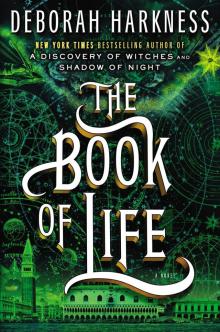 The Book of Life
The Book of Life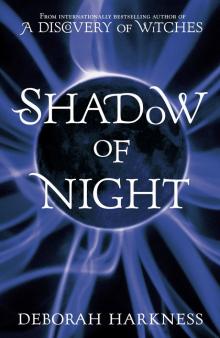 Shadow of Night
Shadow of Night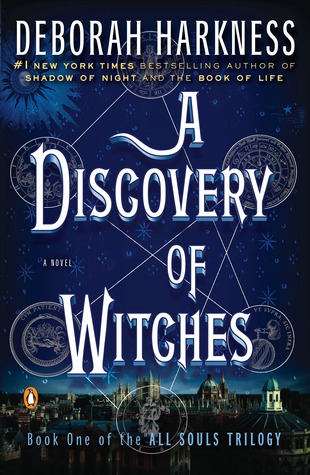 A Discovery of Witches
A Discovery of Witches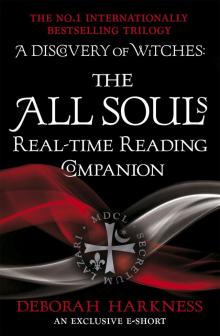 The All Souls Real-Time Reading Companion
The All Souls Real-Time Reading Companion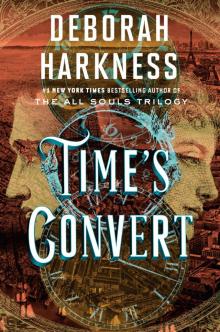 Time's Convert
Time's Convert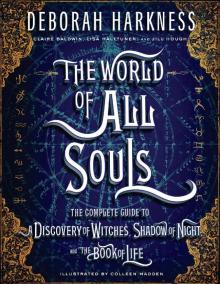 The World of All Souls
The World of All Souls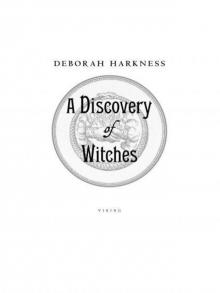 A Discovery of Witches: A Novel (All Souls Trilogy)
A Discovery of Witches: A Novel (All Souls Trilogy) Shadow of Night: A Novel
Shadow of Night: A Novel